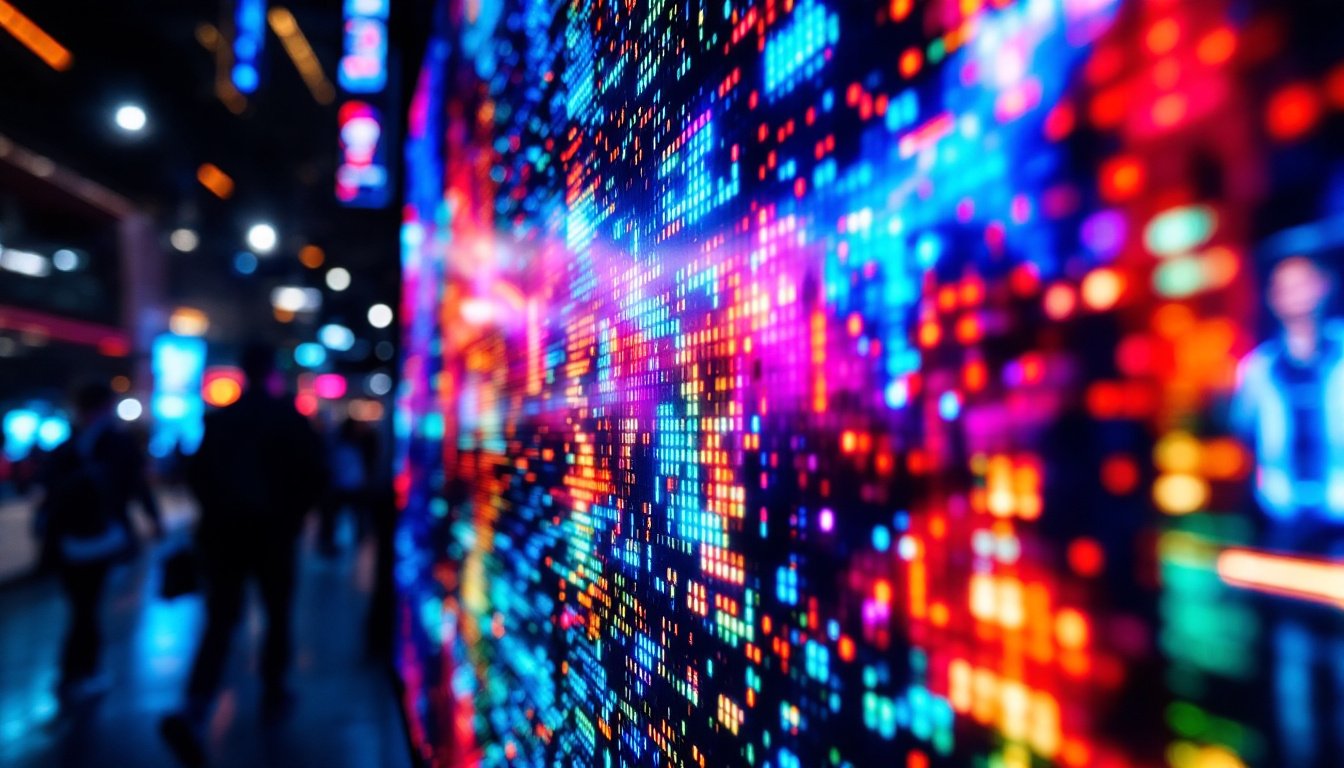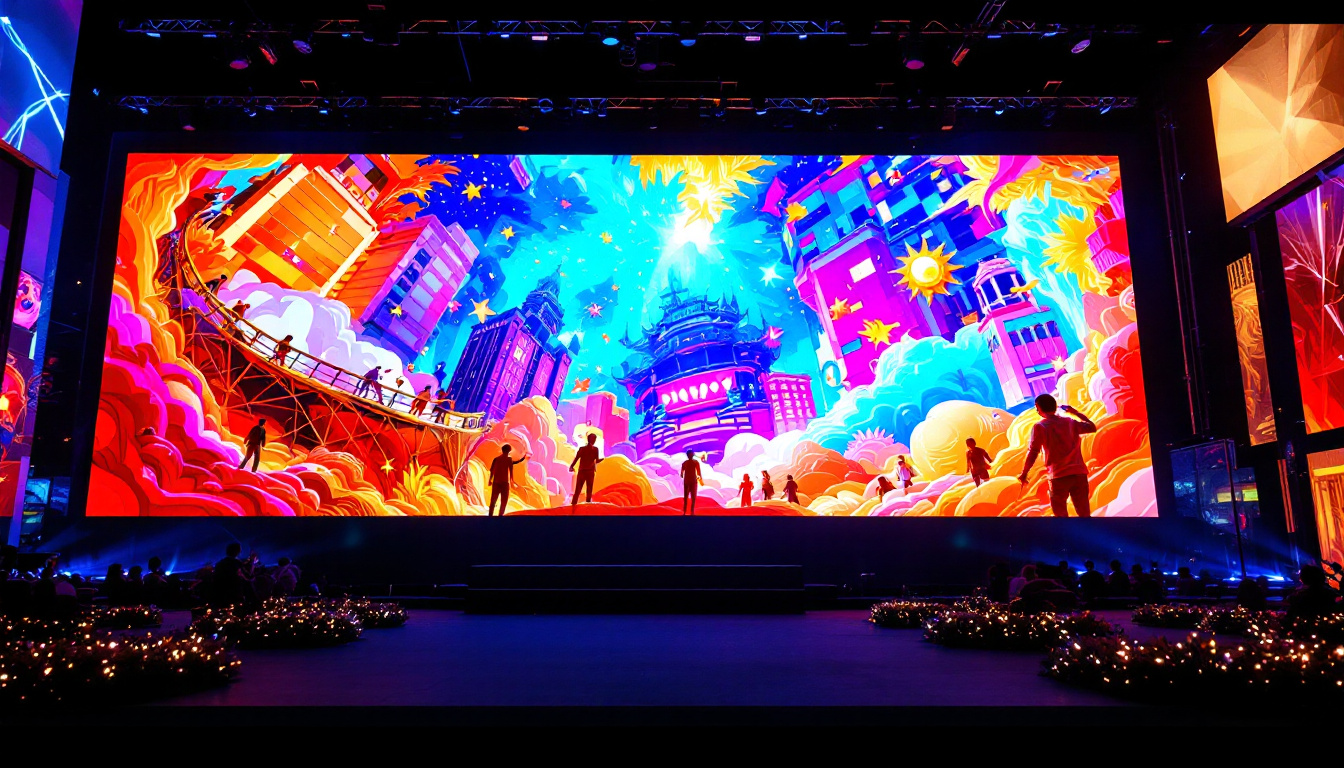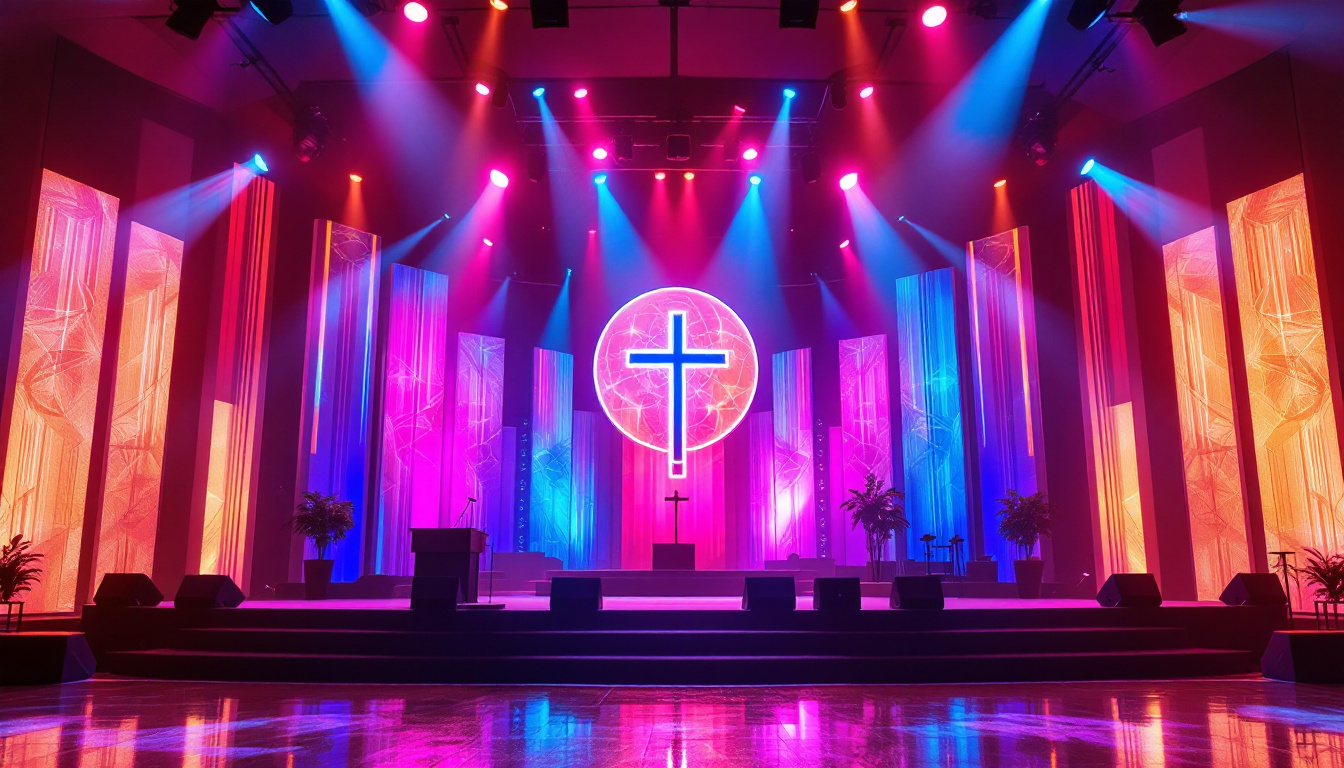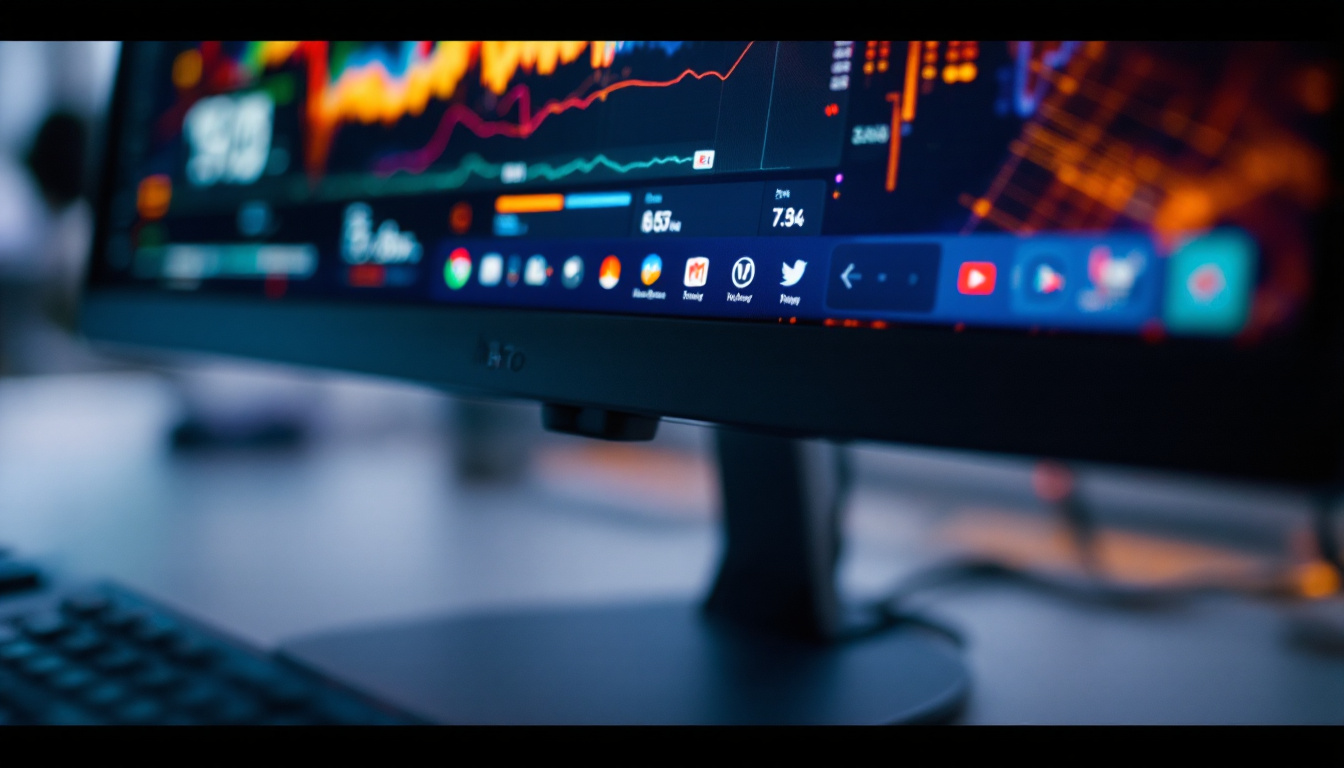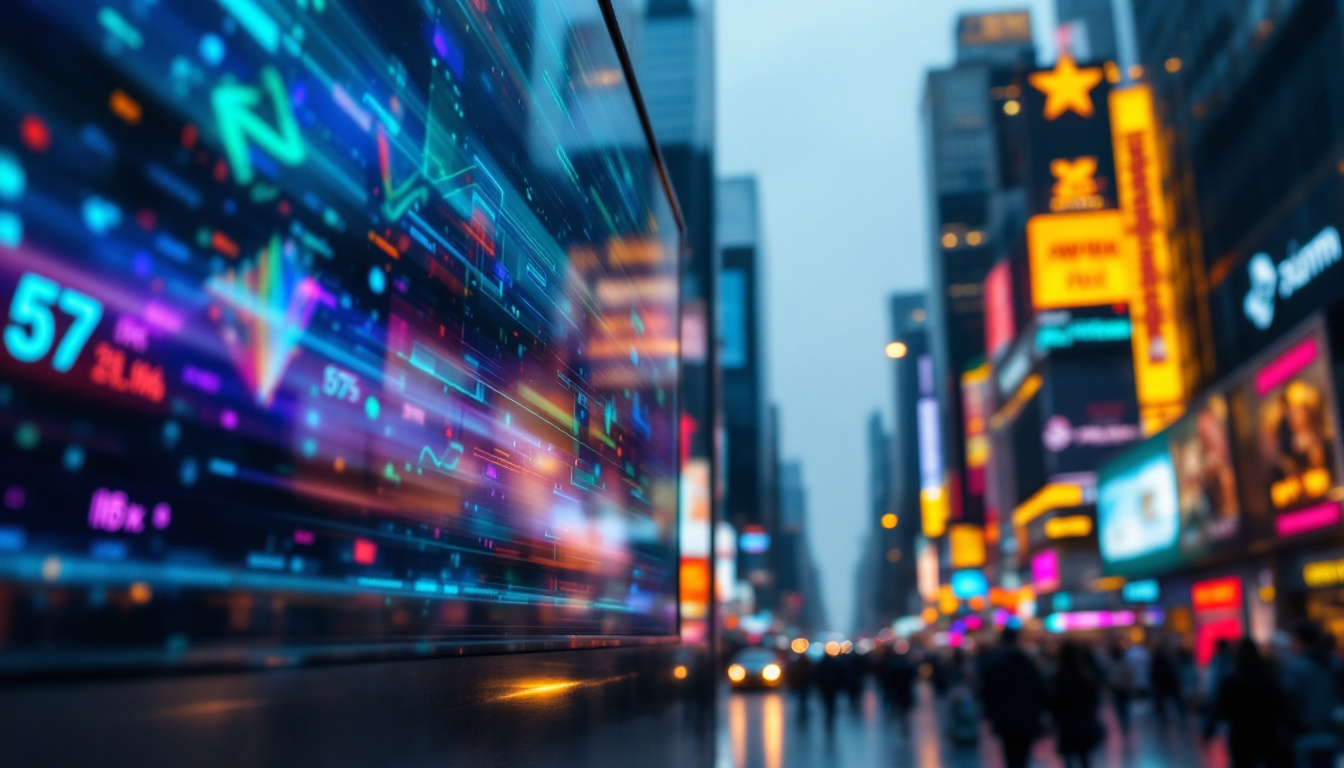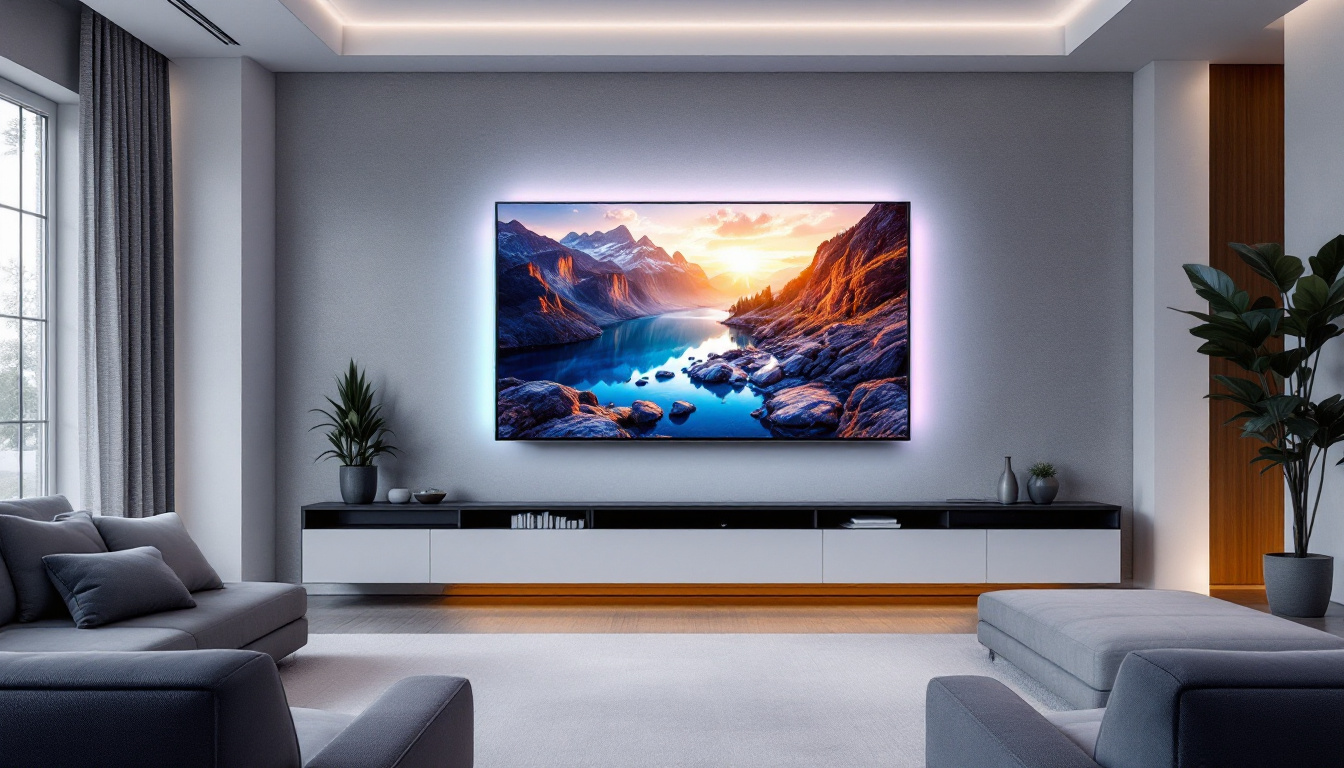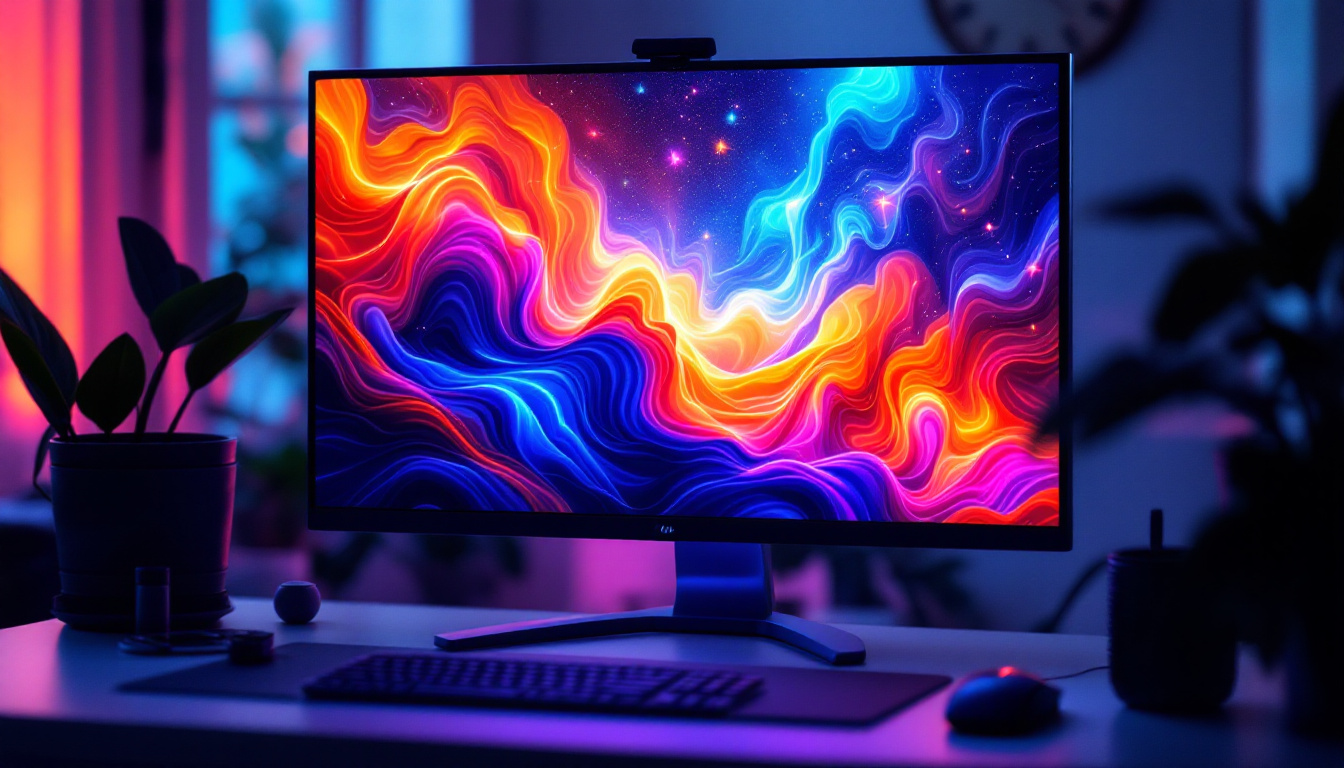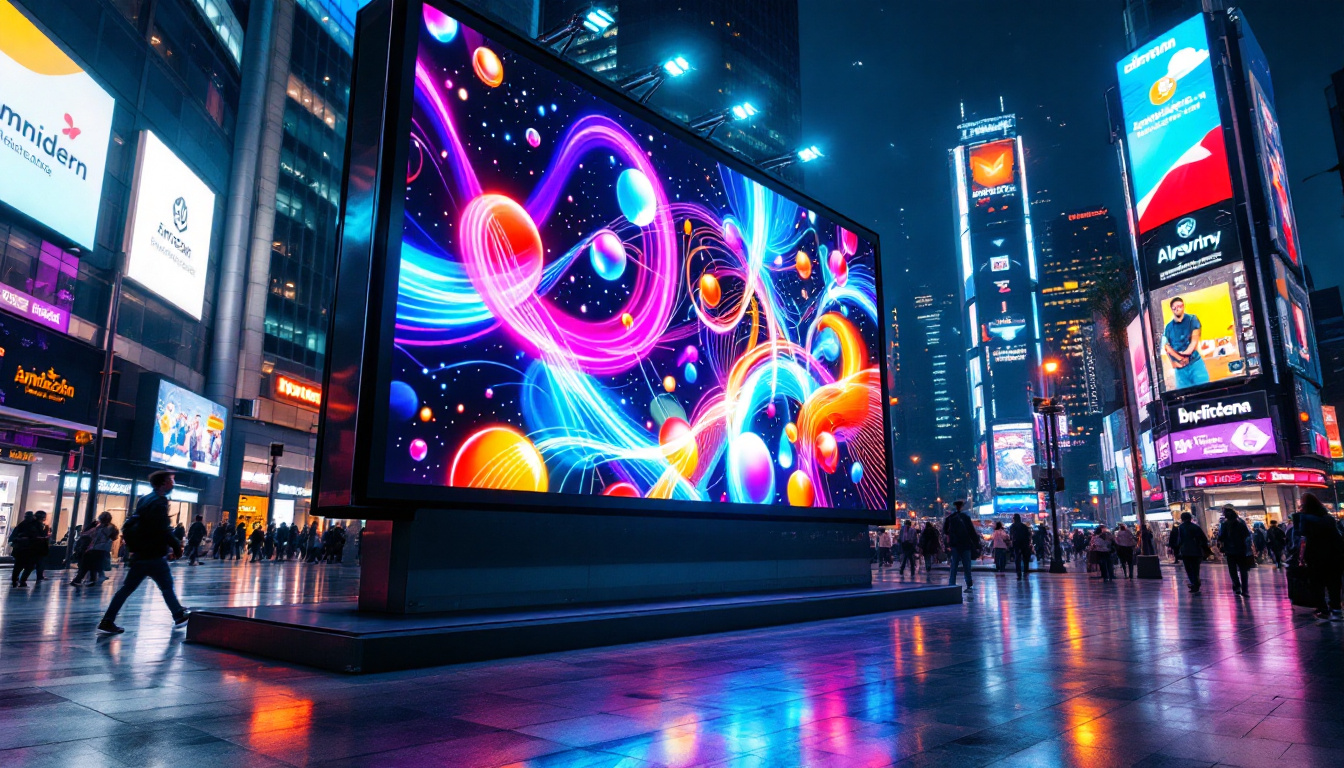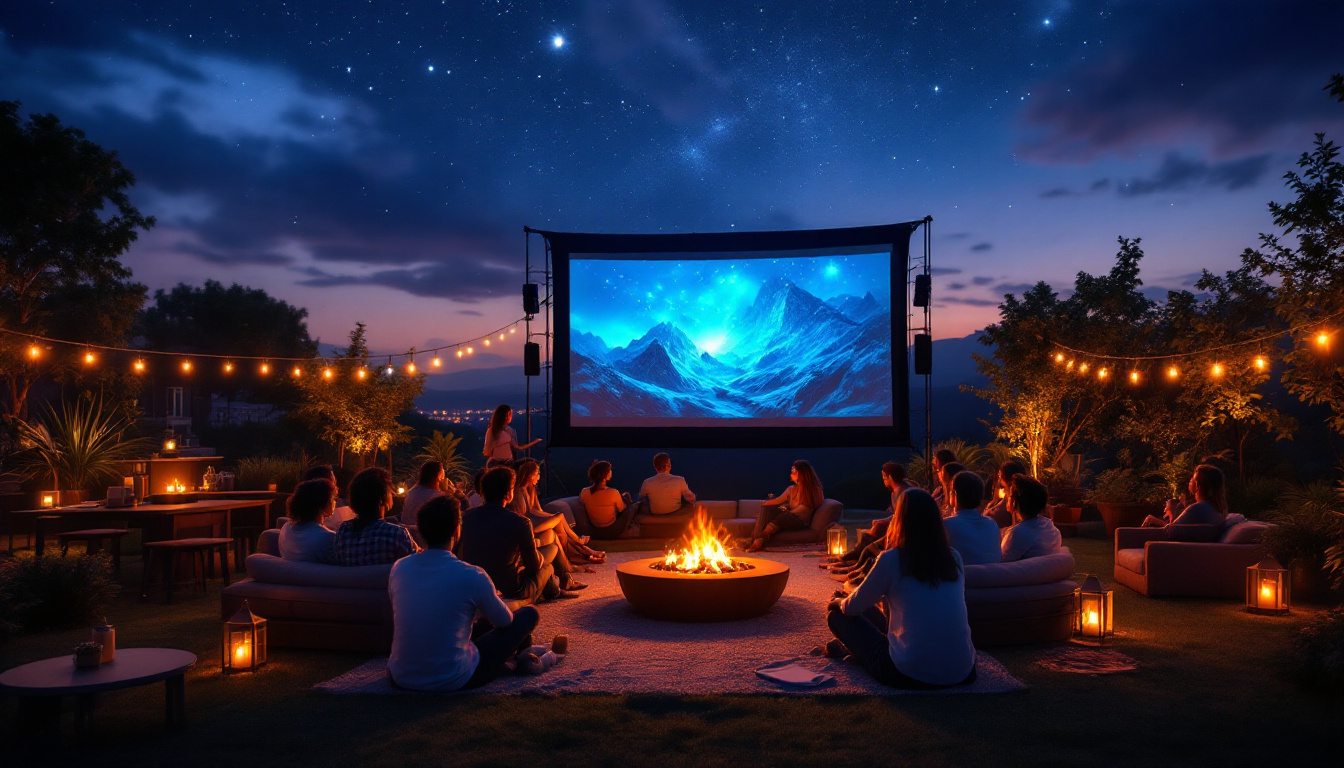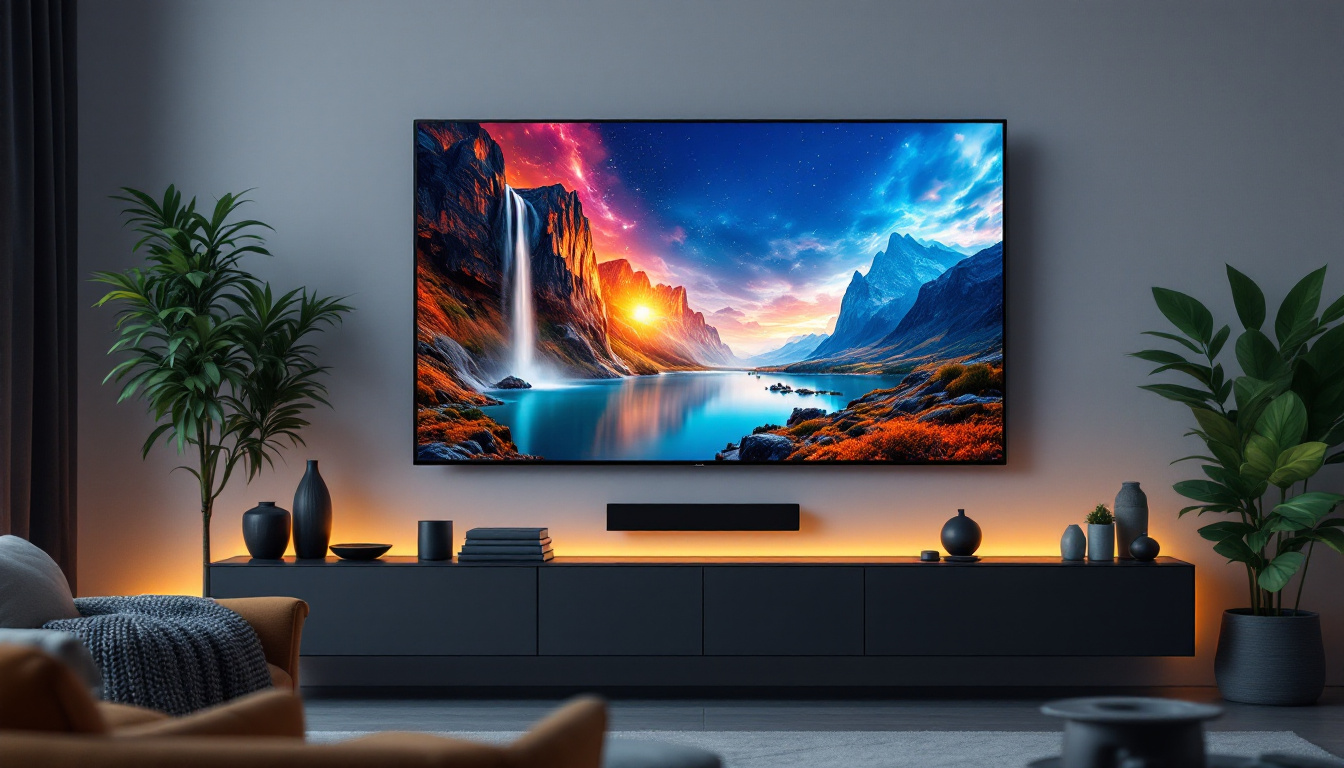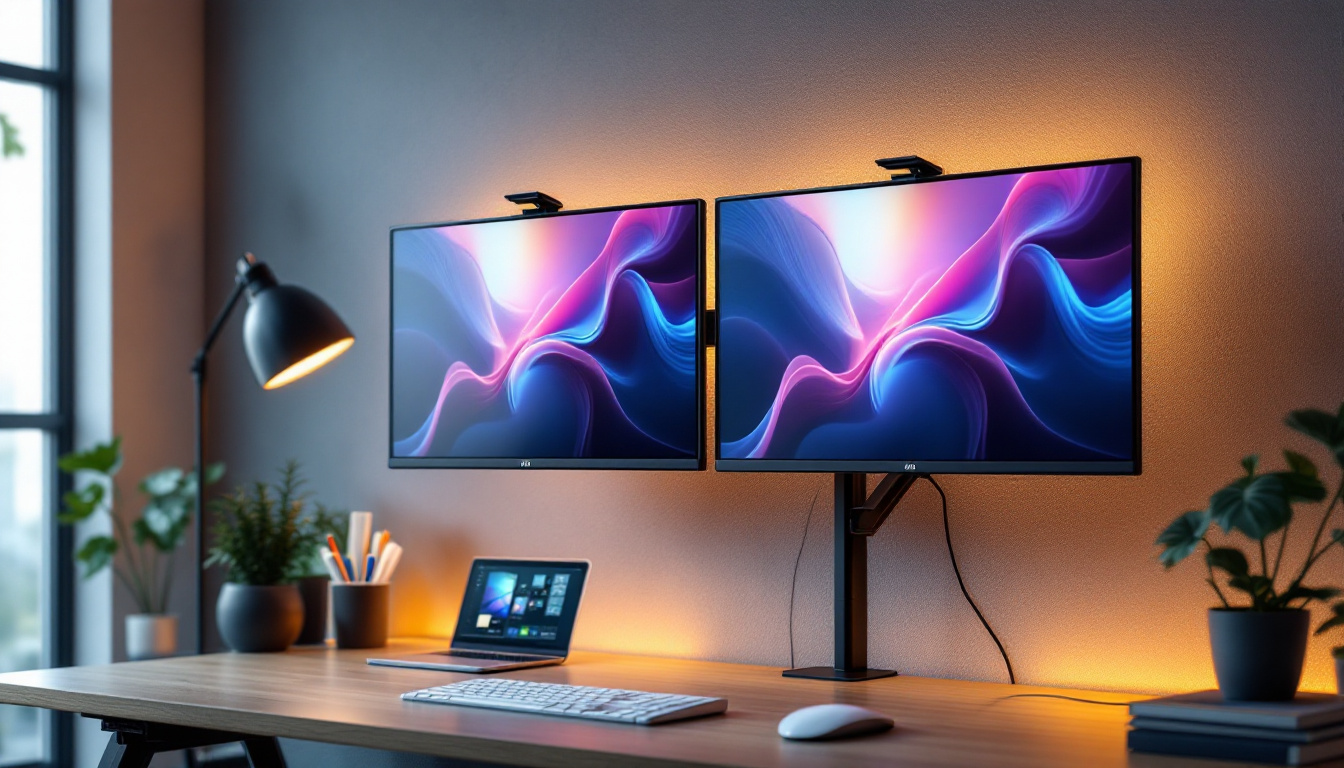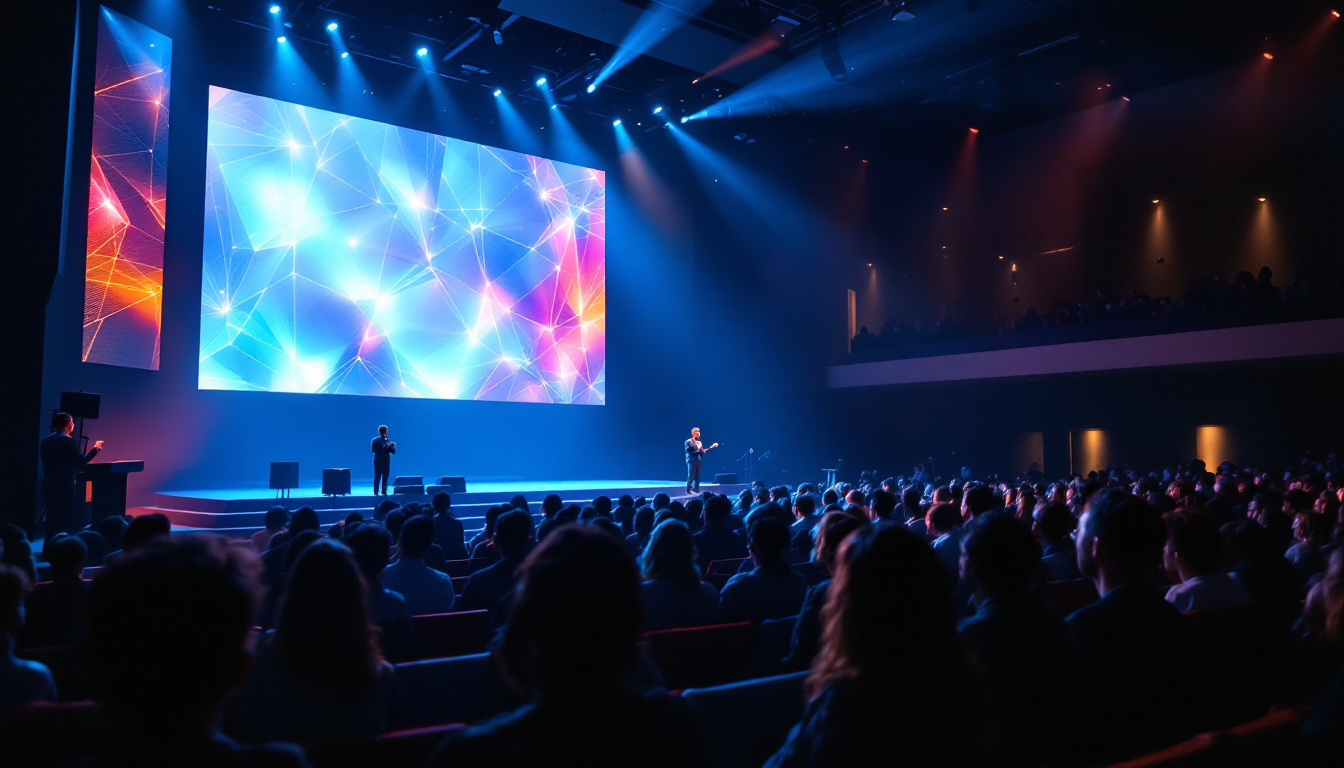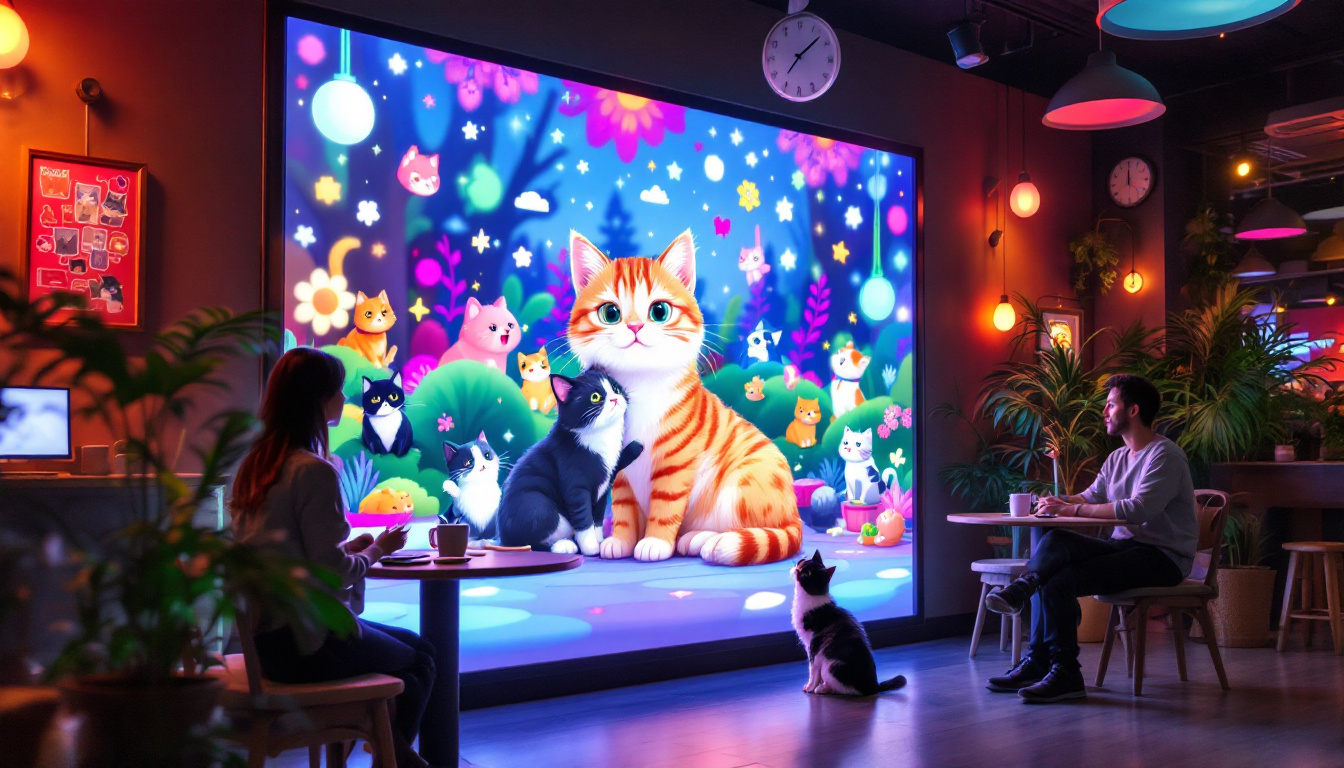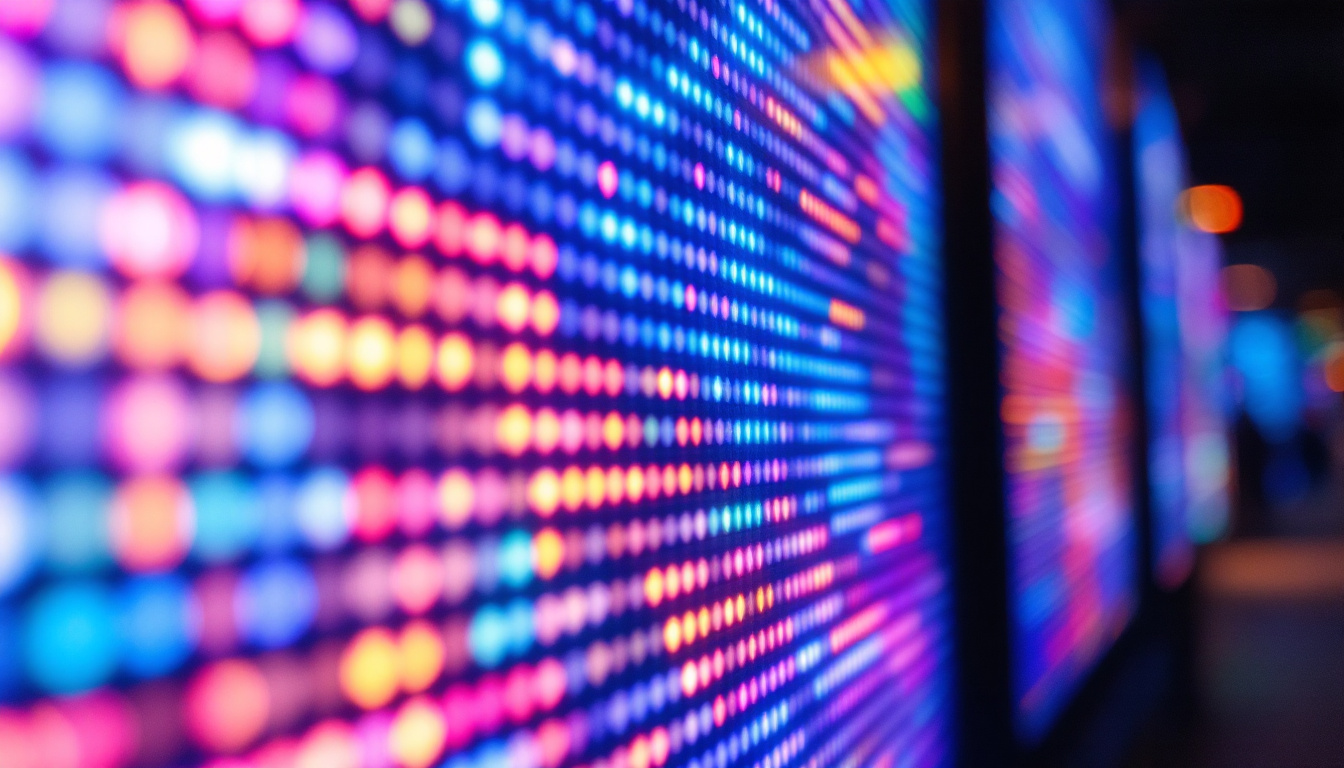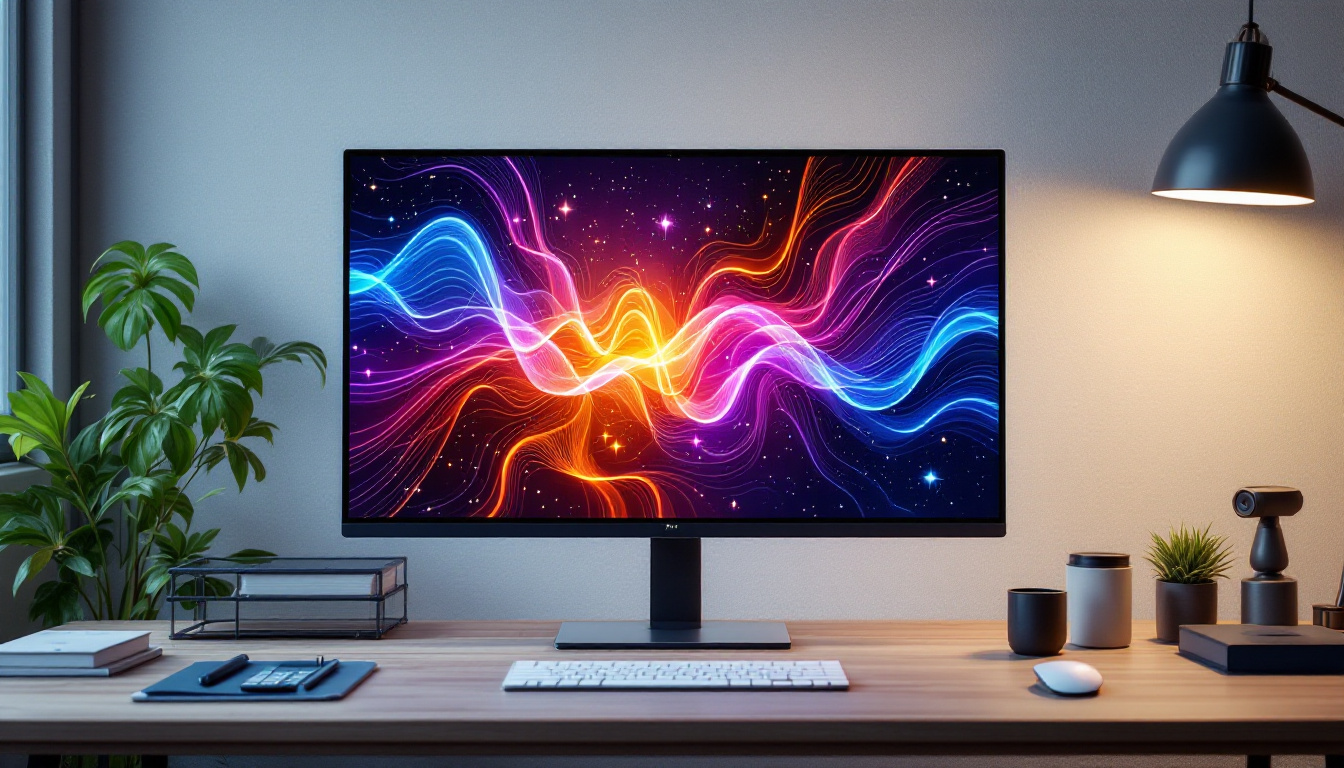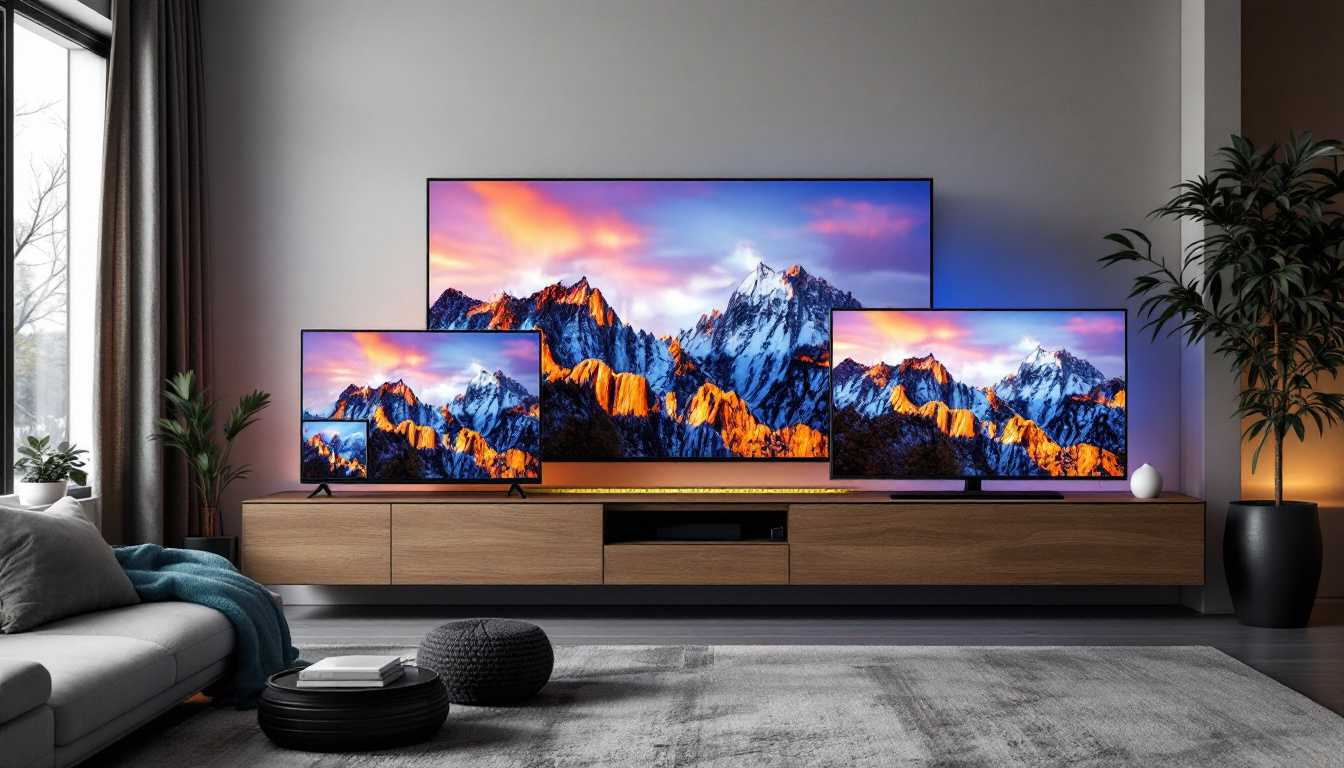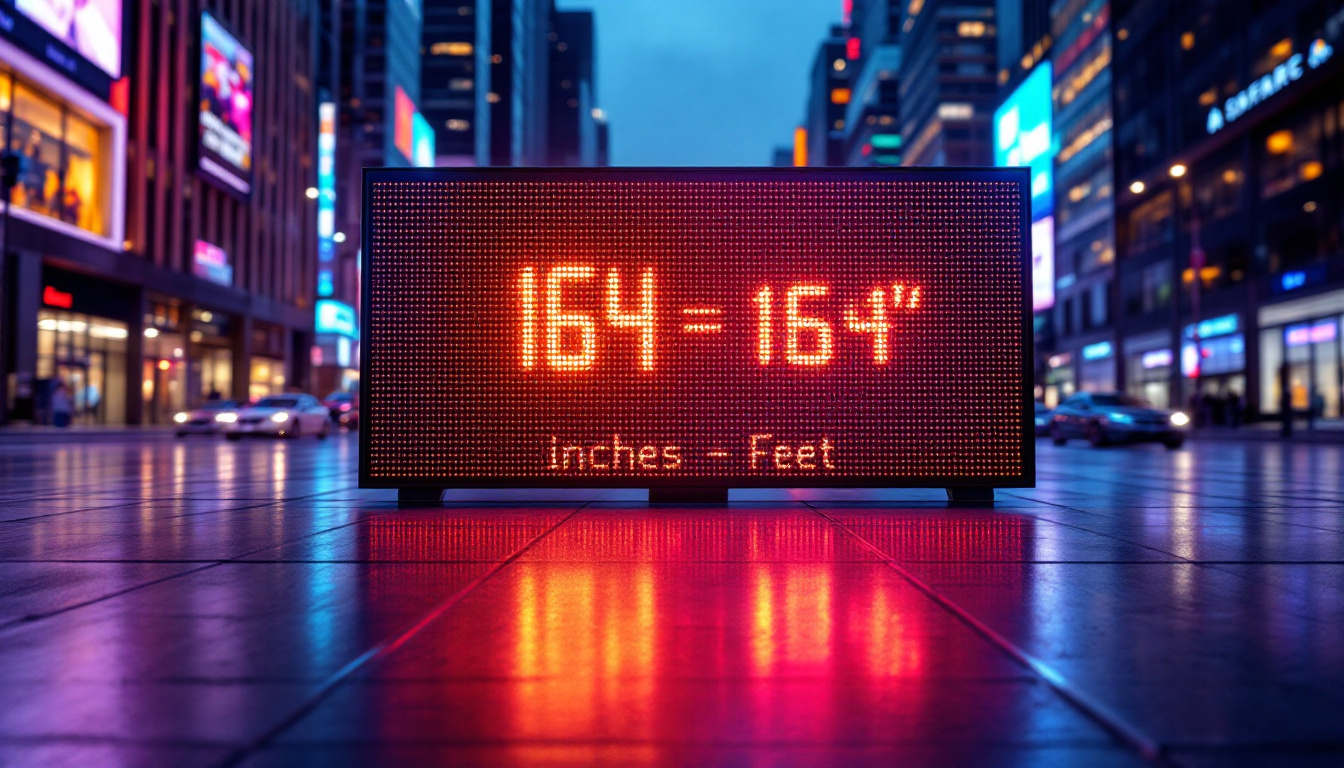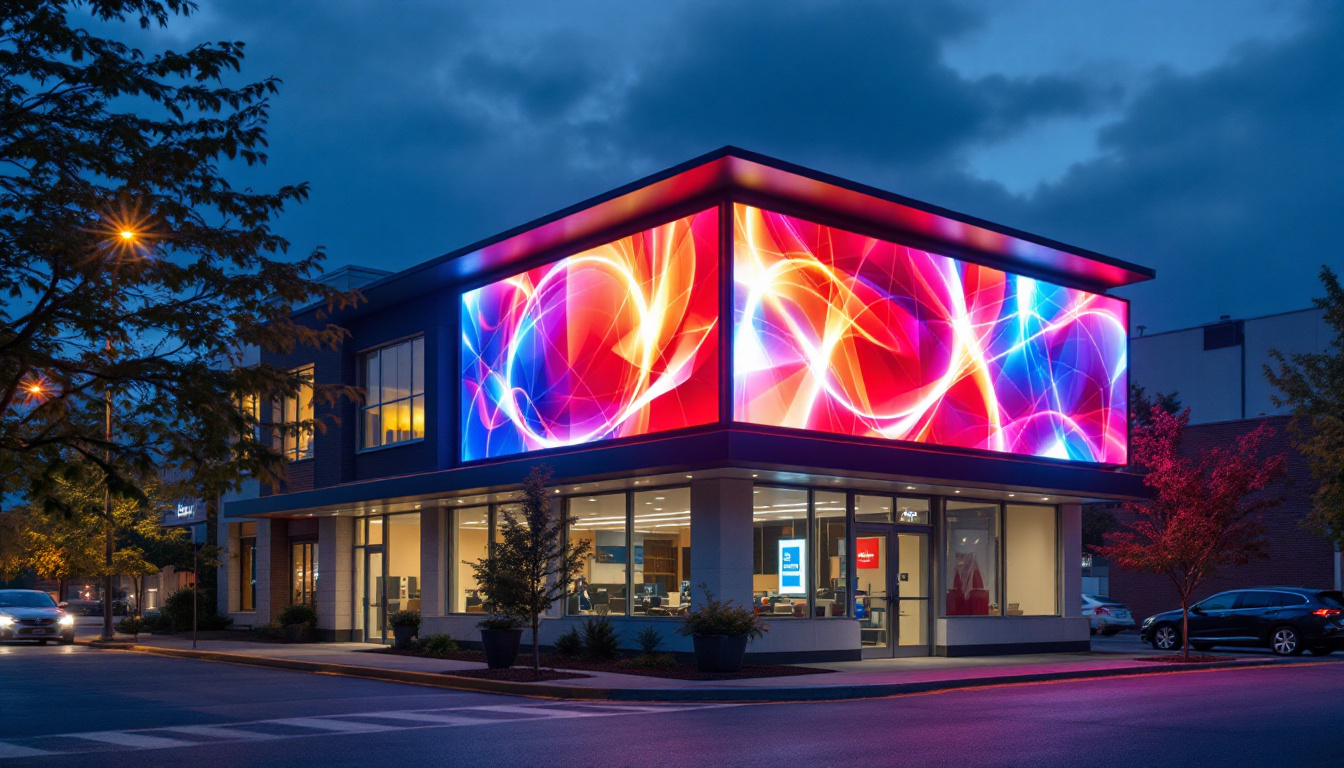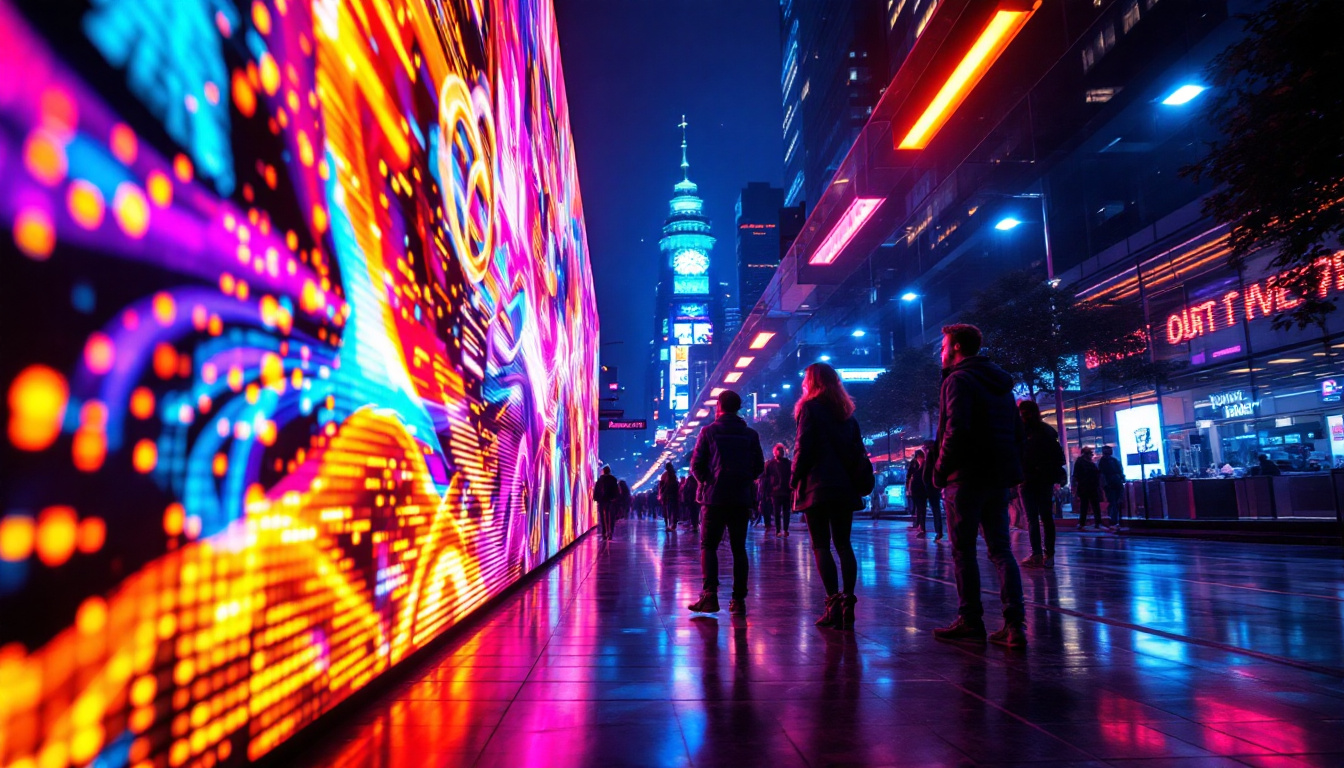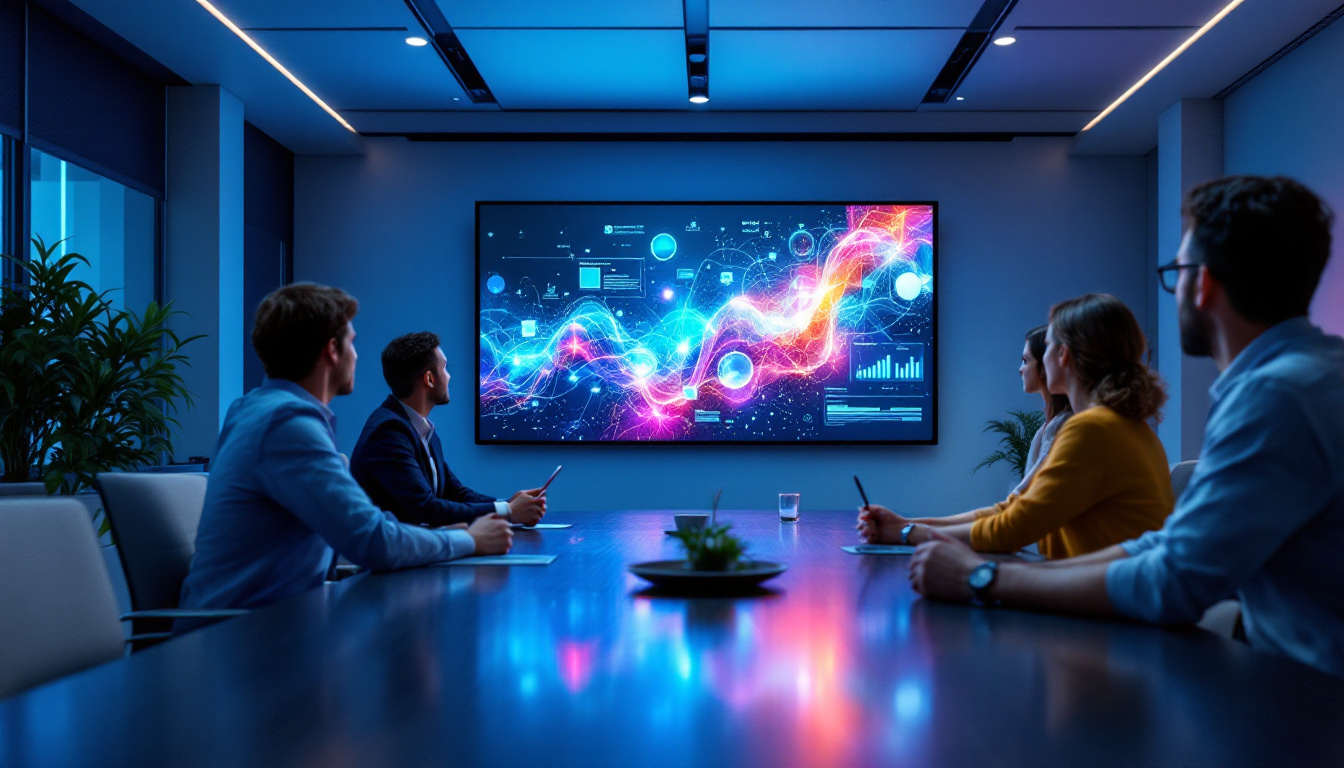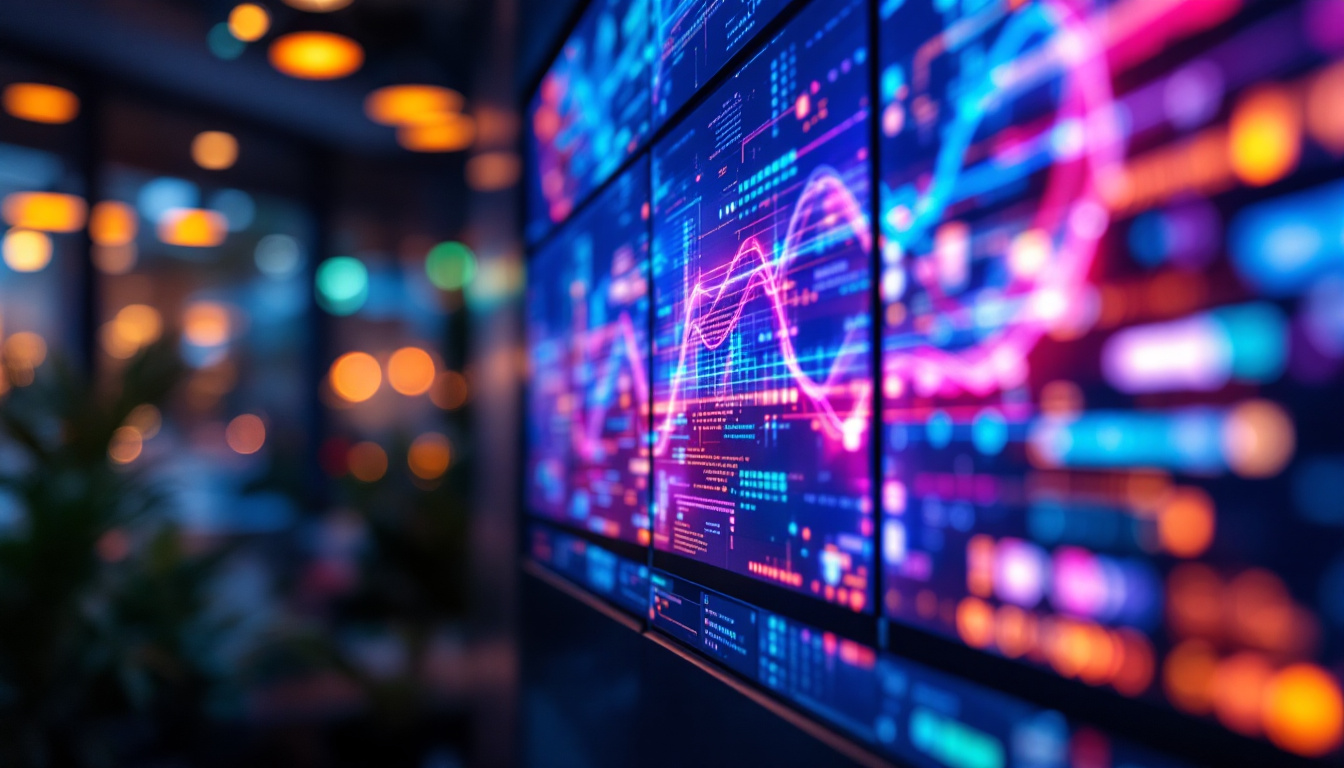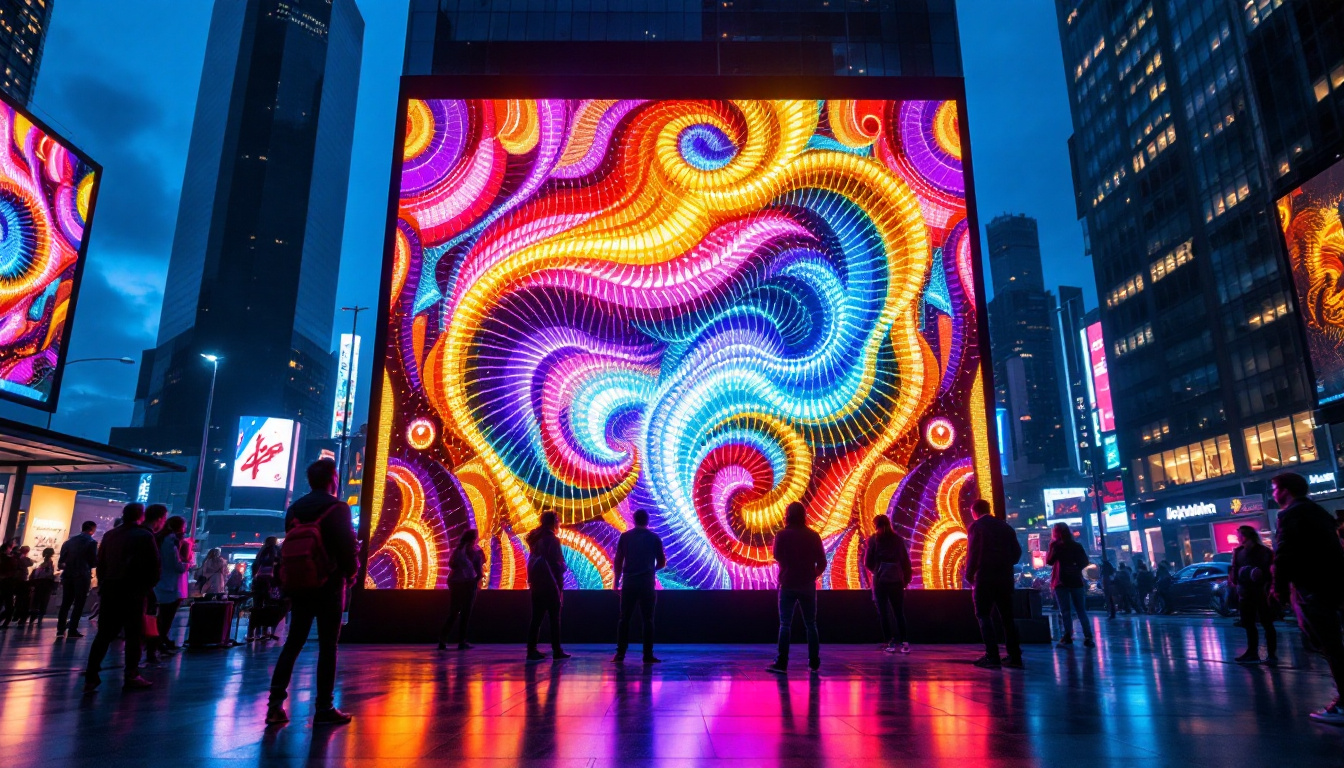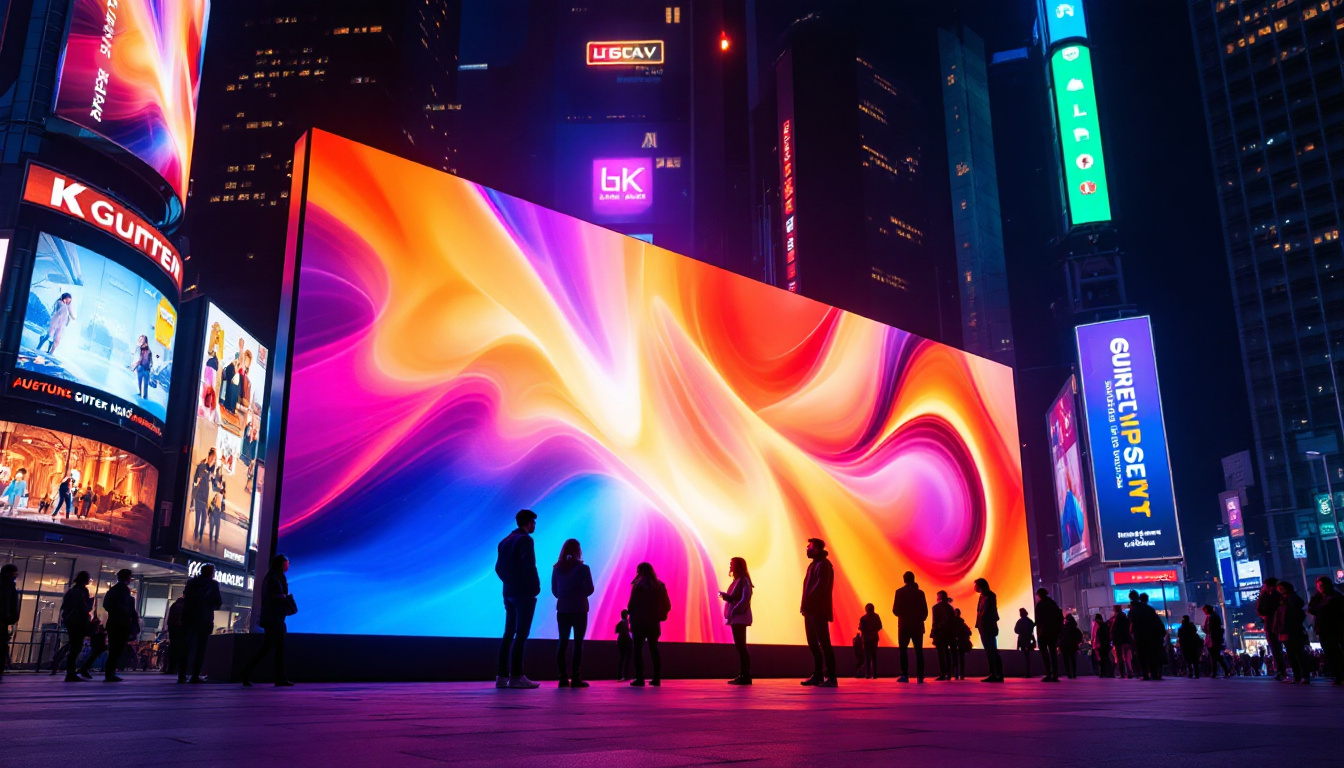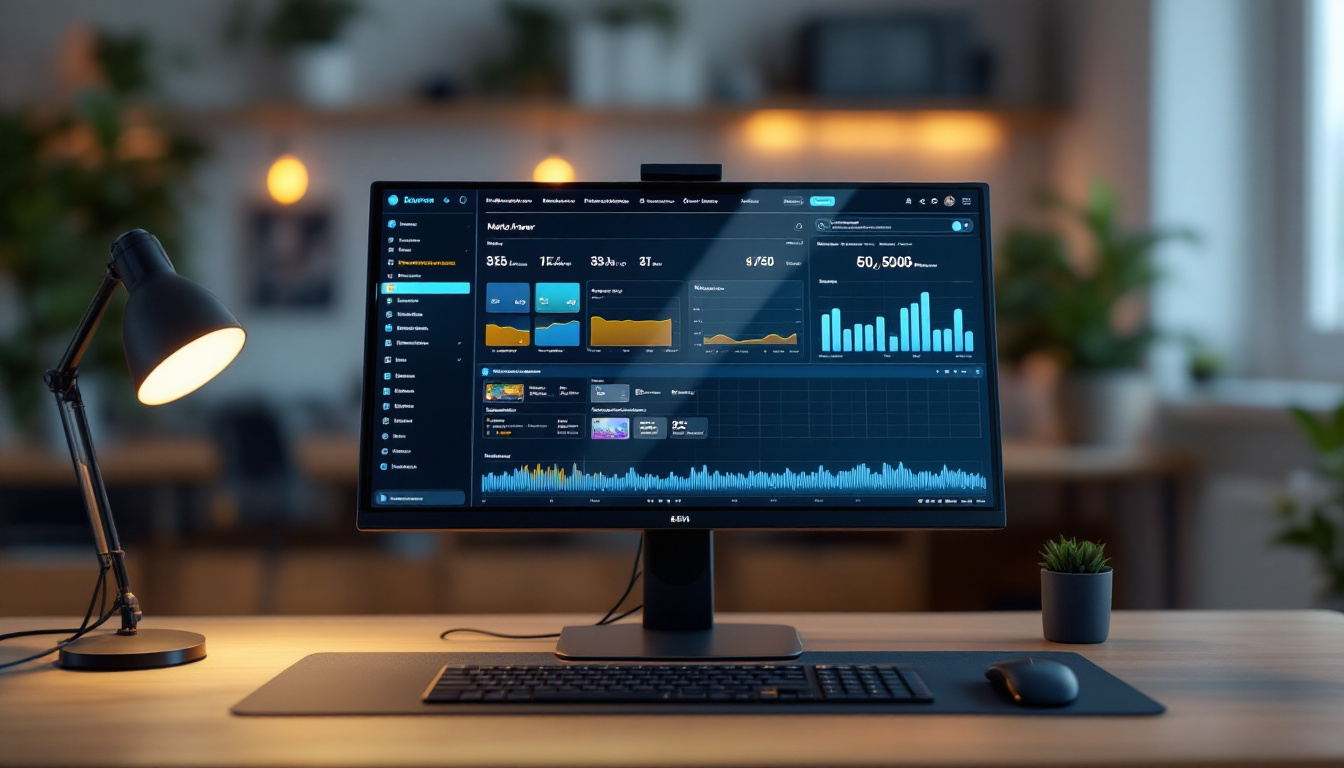In today’s digital age, LED displays have become an integral part of our daily lives. From advertising billboards to television screens, these panels have transformed the way we consume information and entertainment. This article delves into the intricacies of LED displays, exploring their technology, applications, and advantages.
Understanding LED Technology
LED, or Light Emitting Diode, technology has revolutionized the display industry. Unlike traditional display technologies that rely on cathode ray tubes (CRT) or liquid crystal displays (LCD), LEDs utilize semiconductor materials to produce light. This fundamental difference not only enhances the quality of images but also contributes to energy efficiency. The lifespan of LED technology is significantly longer than that of its predecessors, often exceeding 25,000 hours of use, which translates to years of reliable performance without the need for frequent replacements. This durability, combined with lower energy consumption, makes LEDs an economically viable choice for both consumers and businesses.
How LED Displays Work
LED displays consist of an array of tiny light-emitting diodes that work together to create images. Each pixel in an LED display is made up of red, green, and blue (RGB) diodes. By adjusting the intensity of these colors, a wide spectrum of colors can be produced, resulting in vibrant and dynamic visuals. The technology behind LED displays also allows for rapid refresh rates, which minimizes motion blur and enhances the viewing experience, particularly in fast-paced video content. This capability is crucial for applications such as sports broadcasting and gaming, where clarity and responsiveness are paramount.
The arrangement of these diodes can vary, leading to different types of LED displays, such as direct view and backlit displays. Direct view LEDs are often used in large outdoor screens, while backlit LEDs are commonly found in televisions and computer monitors. Additionally, advancements in LED technology have led to the development of microLED displays, which utilize microscopic LEDs to create even finer resolutions and improved color accuracy. These innovations are paving the way for next-generation displays that promise to further enhance visual experiences.
Types of LED Displays
There are several types of LED displays, each designed for specific applications. The most common types include:
- Indoor LED Displays: These are typically used in venues such as shopping malls, conference rooms, and theaters. They offer high resolution and brightness, making them ideal for close viewing. The versatility of indoor LED displays allows them to be configured in various shapes and sizes, providing creative solutions for advertising and presentations.
- Outdoor LED Displays: Built to withstand various weather conditions, these displays are commonly used for advertising and public announcements. They are designed to be highly visible even in direct sunlight, often featuring protective coatings and robust casings to prevent damage from rain, wind, and dust. The brightness levels of outdoor LEDs can reach up to 10,000 nits, ensuring that messages are clear and impactful, regardless of the environment.
- Transparent LED Displays: These innovative displays allow light to pass through, making them suitable for window displays and creative installations. They offer a unique blend of visibility and transparency, allowing businesses to showcase products while maintaining an open and inviting atmosphere. Transparent LEDs are becoming increasingly popular in retail environments, where they can be used to create eye-catching advertisements without obstructing the view of the merchandise behind them.
Applications of LED Displays
LED displays have a wide range of applications across various industries. Their versatility and effectiveness make them a popular choice for many businesses and organizations.
Advertising and Marketing
One of the most prominent uses of LED displays is in advertising. Billboards and digital signage equipped with LED technology can capture the attention of passersby with bright, dynamic content. The ability to change messages quickly allows businesses to promote various products and services without the need for physical signage changes.
Moreover, the high resolution and vivid colors of LED displays enhance the visual appeal of advertisements, leading to increased engagement and conversion rates. This adaptability makes LED displays a cost-effective solution for marketing campaigns.
Entertainment and Events
In the entertainment industry, LED displays play a crucial role in enhancing the audience experience. Concerts, sports events, and theatrical performances often utilize large LED screens to display visuals, live feeds, and graphics. This not only improves visibility for attendees but also adds a dynamic element to the overall production.
Furthermore, LED technology allows for creative lighting effects and animations, which can elevate the atmosphere of any event. The flexibility of LED displays enables event organizers to customize their setups according to specific themes and requirements.
Corporate and Educational Use
In corporate environments, LED displays are increasingly used for presentations, meetings, and training sessions. Their clarity and brightness ensure that all participants can view the content, regardless of their seating position. Additionally, these displays can be integrated with various software tools, enhancing collaboration and interactivity during discussions.
In educational settings, LED displays serve as effective teaching aids. They can display educational content, interactive lessons, and multimedia presentations, making learning more engaging for students. The ability to connect with other devices also allows for seamless integration of technology into the classroom.
Advantages of LED Displays
The growing popularity of LED displays can be attributed to their numerous advantages over traditional display technologies. Understanding these benefits can help businesses and individuals make informed decisions when choosing display solutions.
Energy Efficiency
One of the most significant advantages of LED displays is their energy efficiency. Compared to traditional lighting technologies, LED panels consume significantly less power while providing brighter and more vibrant images. This not only reduces electricity costs but also contributes to a lower carbon footprint.
Moreover, LED displays have a longer lifespan than their counterparts. With proper maintenance, they can last for over 100,000 hours, reducing the need for frequent replacements and further minimizing waste.
High Brightness and Contrast
LED displays offer superior brightness and contrast ratios, making them suitable for various lighting conditions. Whether in a dimly lit room or under direct sunlight, LED panels maintain their visibility and clarity. This adaptability is particularly crucial for outdoor applications, where traditional displays may struggle to compete with ambient light.
The high contrast levels also enhance the overall viewing experience, allowing for sharper images and more vibrant colors. This is especially important in applications where detail and clarity are paramount, such as medical imaging or high-definition video playback.
Durability and Reliability
LED displays are known for their durability and reliability. Unlike traditional screens that can be fragile and prone to damage, LED panels are built to withstand harsh conditions. They are resistant to shock, vibration, and temperature fluctuations, making them ideal for outdoor use.
Additionally, the solid-state nature of LEDs means that they are less likely to fail compared to other technologies. This reliability ensures that businesses can count on their displays to function consistently, reducing downtime and maintenance costs.
Challenges and Considerations
Despite their many advantages, LED displays also come with certain challenges and considerations that potential users should be aware of. Understanding these factors can help in making informed decisions regarding their use.
Initial Cost
One of the primary challenges associated with LED displays is their initial cost. While prices have decreased over the years, high-quality LED panels can still represent a significant investment. Businesses must weigh the long-term benefits against the upfront expenses to determine if LED technology is the right choice for them.
However, it is essential to consider the total cost of ownership, which includes energy savings, maintenance, and lifespan. In many cases, the long-term savings can offset the initial investment, making LED displays a financially viable option.
Technical Complexity
LED displays can be technically complex, requiring specialized knowledge for installation and maintenance. Businesses may need to invest in training for their staff or hire external experts to ensure proper setup and operation. This complexity can be a barrier for some organizations, particularly smaller businesses with limited resources.
Moreover, as technology continues to evolve, staying updated with the latest advancements in LED technology may require ongoing education and investment. Businesses should be prepared for this dynamic landscape to maximize the benefits of their LED displays.
The Future of LED Displays
The future of LED displays looks promising, with continuous advancements in technology and applications. As demand for high-quality visual experiences grows, manufacturers are innovating to meet the needs of various industries.
Emerging Trends
Several emerging trends are shaping the future of LED displays. One notable trend is the development of flexible and curved LED panels. These innovative designs allow for unique installations and creative displays that were previously unattainable. From architectural applications to immersive environments, the possibilities are expanding.
Additionally, advancements in pixel density are leading to higher resolution displays. This trend is particularly relevant for applications requiring detailed visuals, such as medical imaging or high-end entertainment. As technology progresses, the boundaries of what is possible with LED displays will continue to be pushed.
Integration with Smart Technology
Another significant trend is the integration of LED displays with smart technology. As the Internet of Things (IoT) continues to grow, LED displays can be connected to various devices and systems, allowing for enhanced interactivity and functionality. This integration enables real-time updates, data visualization, and personalized content delivery.
For example, in retail environments, LED displays can be linked to inventory systems to showcase real-time product availability or promotions. This level of interactivity can significantly enhance customer engagement and drive sales.
Conclusion
LED displays have transformed the way information and entertainment are presented, offering numerous advantages over traditional display technologies. Their energy efficiency, high brightness, and durability make them ideal for a wide range of applications, from advertising to education.
While there are challenges associated with their initial cost and technical complexity, the long-term benefits often outweigh these concerns. As technology continues to evolve, the future of LED displays looks bright, with emerging trends and innovations paving the way for even more exciting possibilities.
In conclusion, understanding the intricacies of LED displays is essential for businesses and individuals looking to leverage this technology effectively. By embracing the advantages and staying informed about the latest trends, users can maximize the impact of LED displays in their respective fields.
Discover LumenMatrix’s Innovative LED Solutions
Ready to elevate your visual experience with the latest in LED technology? LumenMatrix is at the forefront of LED innovation, offering a diverse range of LED display solutions tailored to your needs. Whether you’re looking to enhance your brand’s visibility with an Indoor LED Wall Display, captivate passersby with an Outdoor LED Wall Display, or create a dynamic environment with a Custom LED Display, LumenMatrix has the expertise to bring your vision to life. Embrace the future of visual communication and check out LumenMatrix LED Display Solutions today to see how we can help you make a lasting impression.

